
New Patients of Periodontist Dr. Scharf in Long Island, NY
Click above to see reviews.
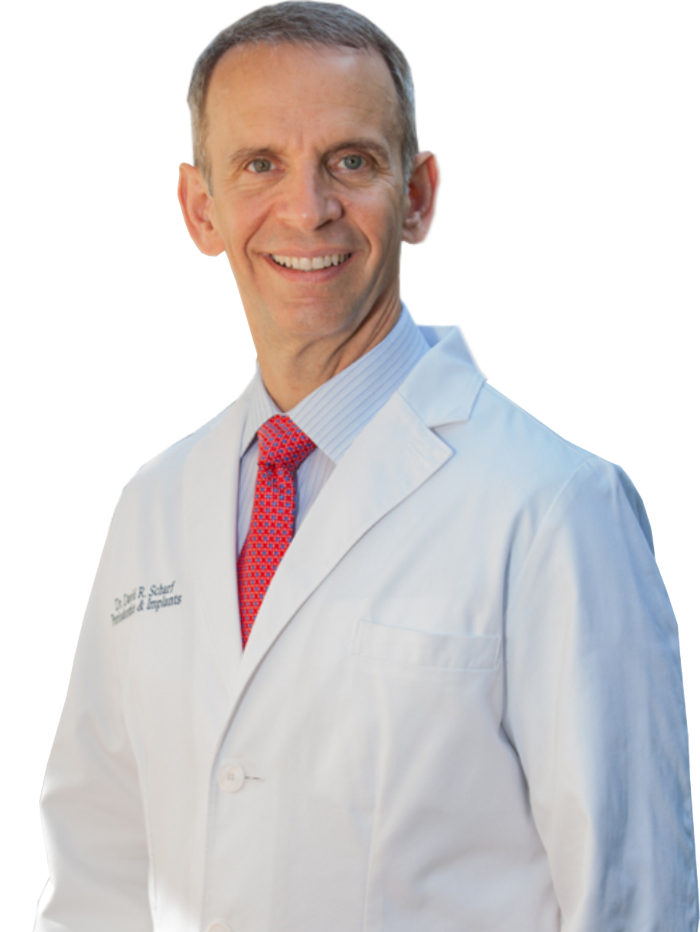
Meet Dr. Scharf
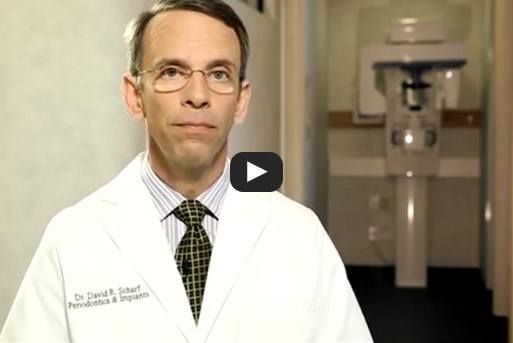
I’m Dr. David R. Scharf. Whether you decided on your own or were advised to visit my office, I’m happy you’re here. As a periodontist, I work with patients who are concerned about periodontitis or gum disease. I also work with patients who need dental implants or any other treatment related to the periodontal tissue or gums.
Watch my video that explains what we do to make sure you stay comfortable throughout a procedure. Then, scroll down and fill out the new patient forms so we can quickly get you started with the procedures you need soon after you arrive at the office.
Your First Visit to Dr. Scharf’s Office
We want your first visit to be a great experience! It’s easy:
- First, contact us to make an appointment. We schedule appointments to allow plenty of time for each patient and strive to stay on schedule.
- Fill out a few online forms. We’ll mail you a welcome packet so you can do this in advance, or you can complete the forms online!
- Meet Dr. Scharf and his staff. Dr. Scharf will see you personally so you can talk with him one-on-one about your dental care.
- Get an exam. A comprehensive exam lets Dr. Scharf know exactly what your dental needs are.
- Consult about your treatment. Dr. Scharf will lay out your options, and our treatment coordinator can help you figure out finances. More information about financial matters and how we can help maximize your insurance benefits can be found here.
Scheduling Your Appointment

When you call to schedule your first appointment, we gather some information about you over the phone. Next, we mail you a welcome packet containing information about our practice as well as a patient registration form and a medical history form.
By completing these forms at home instead of the office, you’ll find it easier to fill out important information such as medications and insurance information. By filling out these forms prior to your appointment, we can serve you more efficiently and minimize your waiting time.
Meet the Staff
Upon arriving in our office, you will be warmly greeted by our receptionist and then by one of Dr. Scharf’s treatment assistants. The assistant will escort you to a private consultation area where you will meet with Dr. Scharf. We strongly believe that each patient must be treated as an individual, and your first visit is designed to help us get to know you and understand your unique needs. The first twenty minutes or so of your new patient visit will be spent talking one-on-one with Dr. Scharf.
You will be able to discuss with Dr. Scharf what you want and don’t want as well as your likes and dislikes. This is your opportunity to bring up any concerns about your conditions or any symptoms or pain you may be experiencing. You can also let us know about any special needs you may have. Lastly, Dr. Scharf will talk to you about your general medical and dental history. Once you feel that all your questions have been answered, you will move to the clinical area for an evaluation.

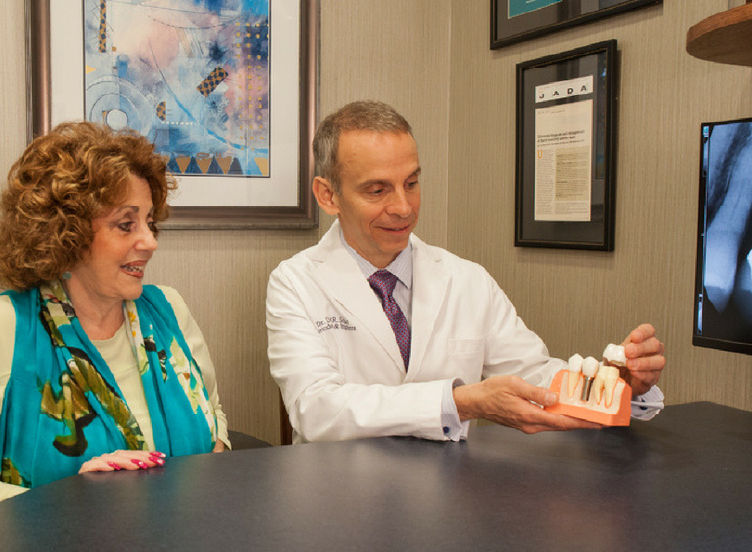
New Patient Evaluation
Dr. Scharf will perform a thorough head and neck examination as well as an oral cancer screening. This is followed by a detailed periodontal and dental examination. Since the teeth, gum tissue, and bone structure are interconnected, Dr. Scharf examines your entire mouth to arrive at a correct diagnosis. As he proceeds with your examination, Dr. Scharf will explain each of the clinical parameters he measures and their significance. Through this process of codiscovery, you gain a full understanding of the nature and severity of your condition.
Radiography—A Look Inside Your Mouth
Based on Dr. Scharf’s findings, we will take the minimum number of digital X-ray images necessary for a diagnosis and treatment plan. For periodontal patients, this is usually a basic periodontal image series taken with our digital X-ray system. This digital system uses up to 90 percent less radiation than film-based systems.
For implant patients, we take a dental scan with our cone beam scanner. The scanner produces a CAT scan image with only one-tenth the radiation exposure of a medical CT scanner. Absolutely no radiographs are taken until explained to you and you agree to them. If you have existing films available to make a diagnosis, we can use those.
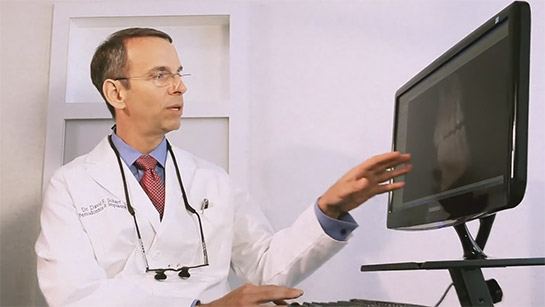
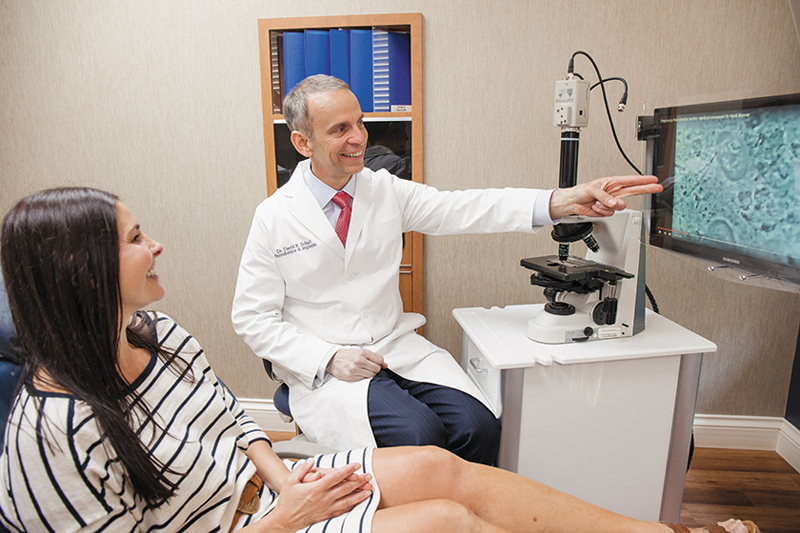
Treatment Conference
At this point in your first visit, it will generally have been 40 minutes to an hour. Depending on the complexities of your needs, Dr. Scharf will see you immediately for a post-evaluation treatment conference or schedule one for a later date. This conference usually takes an additional 20–40 minutes. If you are on a tight schedule, you can take advantage of a separate treatment conference visit without incurring additional costs. The fee for your initial examination includes your conference, even if it takes place on a different day.
At the treatment conference, Dr. Scharf will discuss his findings and your treatment options with you at length. You can ask any questions so you have a clear picture of your condition and the treatment options available. We highlight the pros and cons of each treatment option as well as the associated fees and time involved. This helps you decide which treatment approach is best for you.
Finalizing Your Treatment Plan
At the end of your visit, our treatment coordinator meets with you to make financial arrangements. We want to make sure the treatment you want and need fits into your budget. We offer interest-free financing and options that allow patients to spread payments out while quickly completing treatment. We also help you maximize any dental benefit you may have. You receive a printout of all your scheduled appointments. Dr. Scharf also discusses with you how each visit could impact the rest of your day so you can plan accordingly.
Become a Patient of Dr. Scharf in Long Island, NY
ADDRESS:
98 East Main Street
Babylon, NY 11702
Get Directions
PHONE: (631) 661-6633
OFFICE HOURS:
- Monday: 11:00 AM to 8:00 PM
- Tuesday: 9:00 AM to 8:00 PM
- Wednesday: 8:00 AM to 5:00 PM
- Thursday: 8:00 AM to 5:00 PM
- Friday: 8:00 AM to 5:00 PM
